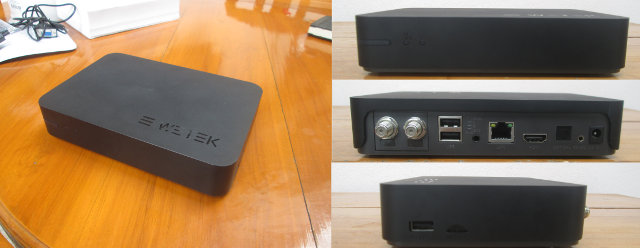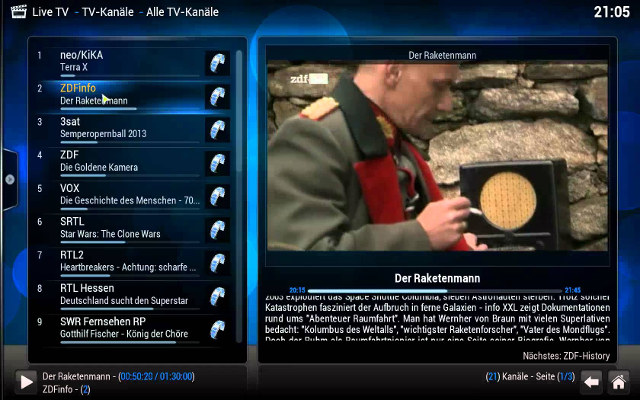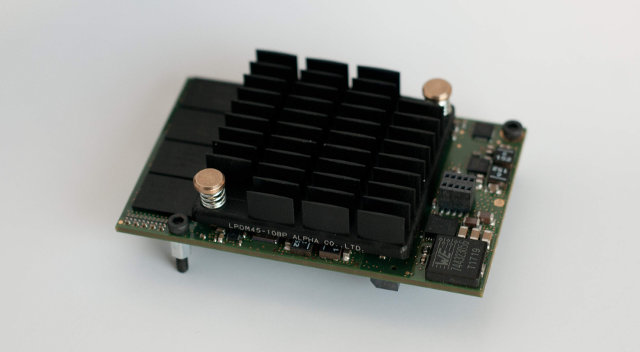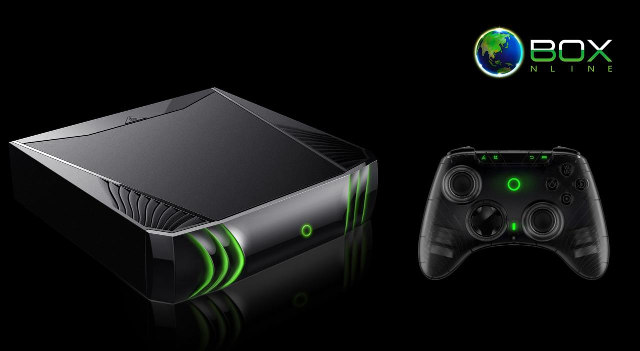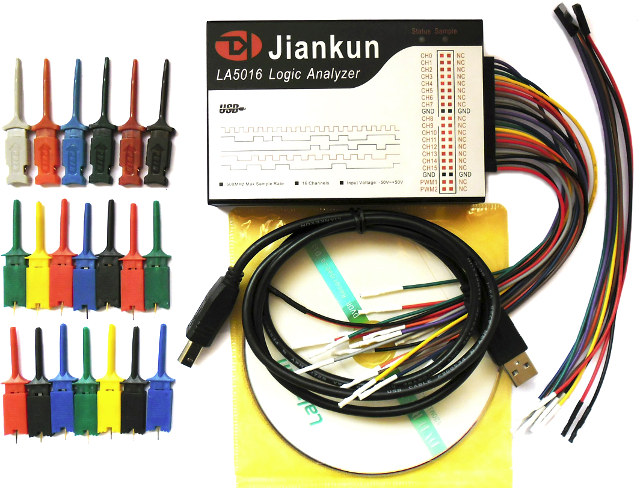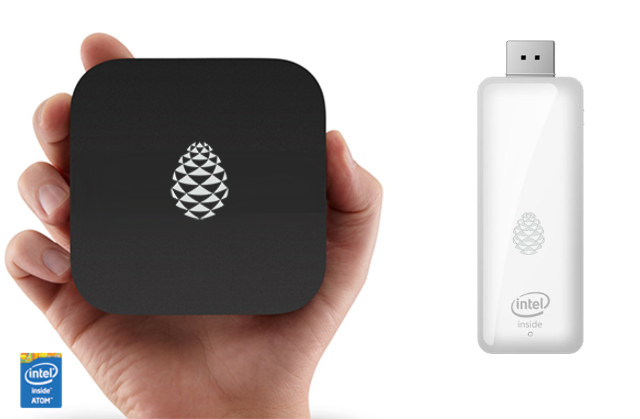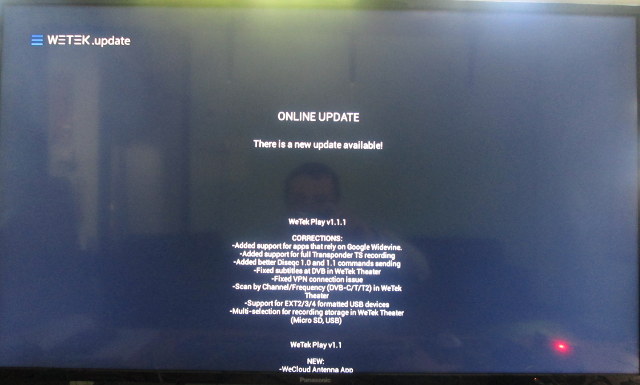Wow! After a slow start of the year, 2014 has been a busy year as new devices based on newer processor from Amlogic started to flood the market in Q2, soon followed by even more Rockchip RK3288 based media players, and then some more Amlogic S805 and Allwinner A80 boards and devices. It’s now the last day of the year, so just like in 2013, it’s time to look back on the main trends of the year, and based on the list of the top 10 most visited posts below, the new generation of ARM Android media players were the most important story of the year on CNX Software, but we also saw more IoT devices and board like Vidonn X5 or LinkIT One, lots of new Wi-Fi modules, and by the end of the year ESP8266 seemed to have won that fight, but being found in $3 Wi-Fi modules. […]
WeTek Play Giveaway with DVB-S2 or DVB-C/T/T2 Tuner
WeTek Play is dual core set-top box officially supporting Android 4.4 and OpenELEC 5.0, and with support for several other Android or Linux distributions. I’ve recently written an updated review of WeTek Play with the latest Android 4.4 firmware, and it’s a pretty good device to watch Live TV either from the Internet via WeCloud Antenna app with over 180 free-to-air channels, or from satellite, cable or terrestrial TV thanks to the DVB-S2 or DVB-C/T/T2 tuner included in the box. EPG, PVR and timeshifting functions are all working very well, except some display issues with Asian languages. The company proposed to give away two WeTek Play STB to CNX Software readers. My model comes with a DVB-S2 tuner, but winners will be able to chose either DVB-S2 or DVB-C/T/T2 tuner as per their preference. Here’s what you have to do to enter the contest, and some terms and conditions: To […]
OpenELEC 5.0 Linux Distribution Released with Kodi 14
OpenELEC (Open Embedded Linux Entertainment Center) is a lightweight Linux distribution aiming at turning your computer or device into a Kodi media center. So instead of installing Kodi as a program or app on a desktop OS or Android, you could have a dedicated machine, which boots faster, has lower requirements (90-125 MB required for a full installation), and supported external tuners to watch live TV, as well as PVR & timeshifting functions out of the box. The developers have now announced OpenELEC 5.0 release, the successor of OpenELEC 4.2. Key changes for OpenELEC 5.0 include: Update from XBMC 13 (Gotham) to Kodi 14 (Helix) Update from Linux 3.16 to Linux 3.17 Switch from OpenSSL to LibreSSL Freescale i.IMX6 support for SolidRun CuBox-i, CuboxTV, and Hummingboard AppleTV support has been discontinued Beside build for the CuBox devices, OpenELEC 5.0 can be downloaded for x86 (32- and 64-bit builds), and the […]
Iliad’s Online Labs Offers Quad Core ARMv7 Dedicated Servers
Iliad (Free) is a French company known to bring the price of technology down for the masses. Several years ago, they disrupted the Internet broadband market, by bringing low cost triple play broadband services to market, and more recently they entered the mobile market with 2 Euros 3G/4G monthly subscriptions. The company also owns Online.net providing hosting services, and which has recently launched a public preview for Online Labs cloud platform. Most hosted solutions nowadays relies on x86 servers and virtualization, but Online Labs instead features dedicated physical ARM servers connected to SSDs. The company call their custom-made credit-card size server modules C1 boards, completely unrelated to ODROID-C1 boards, as those are powered by a quad core ARMv7 Marvell processor with 2GB RAM, and a 1Gb/s network interfaces. These are then assembled into racks as shown below. And finally 16 racks are inserted into a chassis with a control board, […]
Snail Games OBox is an Upcoming High End Android Game Console Powered by Nvidia Tegra K1 Processor
Snail Games is a gaming company based in Suzhou, China, with a branch in the US, specializing online games with over 85 million account on sites like woniu.com for the Chinese market, and playsnail.com for the North American market. Snail is now planning to launch an Android 4.4 console called OBox Online at CES 2015. Internally, the gaming console is comprised of a motherboard, a processor board, an HDD board, and an optional multi-media board. Two processor board are currently available with variants of Nvidia Tegra K1 quad core 32-bit processor, and I assume it should be possible to upgrade the console with a more powerful processor and more memory in the future. Technical specifications listed in a leaked/released PDF: Processor Board SoC Option 1 – Nvidia Tegra K1 TD570D quad-core ARM Cortex A15 CPU @ 2.0 GHz, and Kepler GPU with 192 CUDA cores Option 2 – Nvidia Tegra […]
LA1016, LA2016, and LA5016 Logic Analyzers Cost as Low as $75
I remember 10+ years ago, when my managers argued whether buying a logic analyzer, because some of its functions could be done by an oscilloscope, and logic analyzers were selling for a few thousands dollars at the time. Fast forward to 2014, it’s now possible to acquire lower end logic analyzers that connect to a PC for as low as $75 thanks to products such as LA1016, LA2016, and LA5016, all supports 16-channels and respectively 100, 200 and 500 Mbps sampling rate. Key features and specifications: Input channels – 16 Max Sampling Rate: LA1016: 100M; LA2016: 200M; LA5026: 500M Measurement Bandwidth – LA1016: 20M; LA2016: 40M; LA5016: 80M Min pulse width – LA1016: 20ns; LA2016: 12.5ns; LA5016: 6.25ns Hardware memory size – LA1016/LA2016: 1Gbits; LA5016: 512Mbits Hardware sampling depth – LA1016/LA2016: 50M/channel; LA5016: 32M/channel Max compressed depth – LA1016/LA2016: 10G/channel; LA5016: 5G/channel Input voltage range – -50V ~ +50V Input […]
CloudProject Air X1 and Air S1 Intel Bay Trail Mini PCs to Support Windows 8.1, Android 4.4, and Linux Distributions
Lots of Intel Atom Z3735 based mini PCs have been announced, and some such as MeegoPad T01 have already ended up in the hands of end users, but most of them are running Windows 8.1 with bing, with some featuring a dual boot image with Windows and Android, but no company has yet committed to release one supporting a Linux desktop distribution. This may change thanks to CloudProject Air X1 and Air S1 mini PCs that already support Windows 8.1 (with bing or pro), and Android 4.4.4, but the company is also working on a Linux port, and both models will be available in consumers and enterprise editions. Air X1 is the black mini PC, and Air S1 an HDMI stick stick, both powered by Intel Atom Z3735F processor, and they share most of the same specifications: SoC – Intel Atom Z3735F “Bay Trail” quad core processor @ 1.33 GHz […]
WeTek Play Review with Android 4.2.2 Firmware v1.1.1
I had already reviewed WeTek Play Android DVB-S2 STB this summer, but at the time it was still an early sample, so the company asked me to review it again with the latest firmware that includes bug fixes and new features such as WeCloud Antenna IPTV service with over 180 Live TV channels, now that they’ve officially launched WeTek Play with either a DVB-S2 tuner as in my sample, a DVB-T/T2/C tuner, or no tuner at all. You can find pictures of WeTek Play in my unboxing post. As usual the review will include my first impressions, video testing, and various benchmark, but I’ll also have sections for WeCloud Antenna Live TV over IP service, and WeTek Theater for live TV from my satellite dish. OTA Firmware Update But first of all, I’ll test OTA firmware update, as many companies claim to support OTA updates, but you often end up […]



